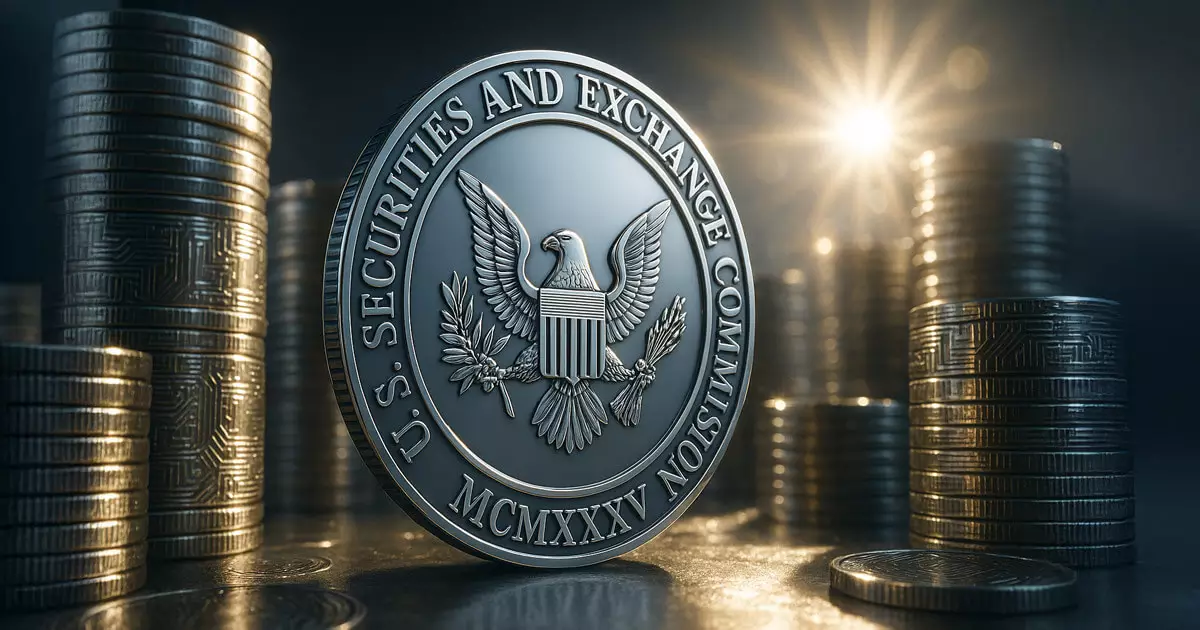The saga of cryptocurrency regulation has continuously evolved, and the SEC’s latest guidance on crypto staking is a testament to that dynamic landscape. By confirming that common forms of staking do not fall under the umbrella of securities laws, the SEC has signaled a more progressive approach to embracing a burgeoning technology that many would argue stands at the forefront of financial innovation. The interpretation now allows participants in various staking activities—including self-staking and custodial staking—freedom to engage without the burdensome requirement of registration. This move is not just about checking a box for compliance; it’s about loosening the regulatory chokehold that has limited American innovation in the crypto space for far too long.
The Importance of Protocol Staking
Staking is integral to proof-of-stake blockchain networks, where users lock up tokens to validate transactions and earn rewards. The SEC recognizes that these activities are essential not only for securing the network but also for fostering a decentralized economy that can thrive without excessive oversight. The backing of SEC Commissioner Hester Peirce is crucial in this narrative. As an outspoken advocate for clearer and more practical guidelines, her support underscores the need for regulations to adapt to technological advancements. However, while the SEC takes a significant step forward, it remains painfully aware of the confusion that continues to plague this sector.
Navigating Regulatory Landmines
Not everyone at the SEC is on board with this new interpretation, as evidenced by the dissenting voice of Commissioner Caroline Crenshaw. Her skepticism raises an essential point about the role of precedent in legal interpretations concerning financial securities. The Howey Test, a long-established criterion in determining what constitutes a security, is not just a legal technicality; it’s a foundational element that has shaped investment landscapes. Crenshaw’s warning suggests that while the SEC may feel empowerment in its current stance, it risks carving a regulatory pathway that could lead to further complications down the road.
Impacts on Investment Vehicles
The implications of this newfound regulatory clarity extend far beyond the realm of individual crypto enthusiasts. It opens doors for institutional investors, particularly in the realm of exchange-traded funds (ETFs). Currently, Ethereum ETFs are prohibited from staking assets, thus placing them at a competitive disadvantage. With the SEC’s guidance, the potential for these funds to integrate staking into their portfolios becomes more plausible, likely creating a wave of interest from both investors and project developers. The future of crypto investments could transform dramatically, offering enhanced revenue streams that would not only appeal to mainstream investors but also increase liquidity in asset markets.
Challenges Remain on the Horizon
Despite the optimistic tone surrounding the SEC’s recent clarifications on staking, challenges remain. Critical questions about tax implications loom large, particularly regarding the treatment of staking rewards within frameworks like grantor trusts. Clarity from the Internal Revenue Service (IRS) is vital to avoid confusion that could deter investors from entering this space. Investors must navigate an evolving landscape where regulations are in flux, and tax structures could create disincentives if not managed properly. If stakers are burdened with ambiguous tax implications, the very essence of what makes staking attractive could be compromised.
Future Trajectories in Crypto Regulation
The current regulatory environment for crypto can be seen as both progress and a work in progress. While the SEC appears to be leaning toward a more lenient view, it’s crucial for regulators to maintain vigilance against potential abuses that could exploit the gray areas left by ambiguity. Those involved in the staking ecosystem need to remain transparent and act with integrity to build trust in a space that has often been marred by skepticism.
The SEC’s recent guidance on staking provides a much-needed boost to cryptocurrency, reflecting a positive trajectory for innovation. A delicate balance must be struck between enabling growth and safeguarding investors, but if done correctly, the regulatory landscape in the U.S. could finally align with the needs of a rapidly evolving digital economy.

